 Frost on eight dried grass leaves After a heavy frost, even the most simple details can take on an extraordinary appearance. I made this photograph with a wide open aperture, and as close as possible to give a really narrow depth of field. This removes/blurs most of the finest details of the frost and dried grass blades, and concentrates the focus (no pun intended) of the image on the form, the sweep, of the grass. But, to me, the little bit of frost detail visible just along the narrow plane of focus, gives that extra little “spark” to the image.
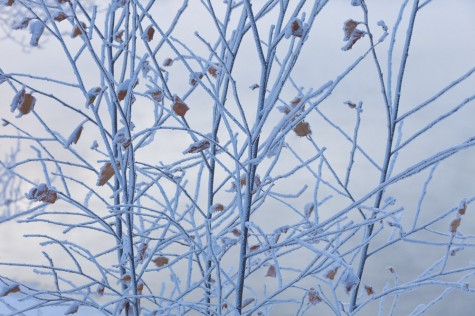 Ice fog frozen on alder saplings Here’s another photo that I took last saturday during our cold snap. On really cold days I like to go make photographs at the Strathcona Science Provincial Park just east of Edmonton. Their is a warm water outflow a little upstream from the park which keeps the river partially open. The mist coming from the river coats the banks, and if the sun is out, the effect can be fantastic—and very chilly looking.
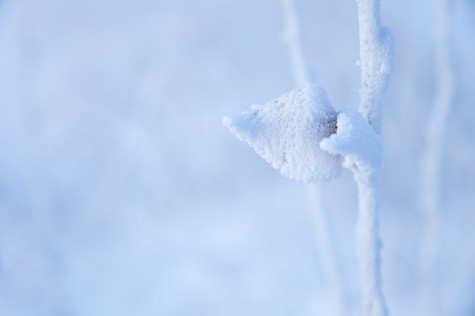 Frozen birch leaf That’s “cold” with a capital “C”. An arctic air front descended on the prairies, sending the temperature to extreme lows and sending all reasonable people safely indoors—the landscape photographers however, grab their cameras and head out. I find that when it gets below -30° C you can actually see how cold it is. The light is exceptionally clear, the frost on the grasses and shrubs accumulates and holds on tight, and the air seems to literally freeze—there is often an ice fog lying low to the ground, providing photographers a pale frosty blue/white background. If you’re well dressed, careful, and have a spare battery for your camera in your warm pocket (for when the first one freezes), it’s a beautiful time to be out capturing the landscape in a state that not many people get to experience.
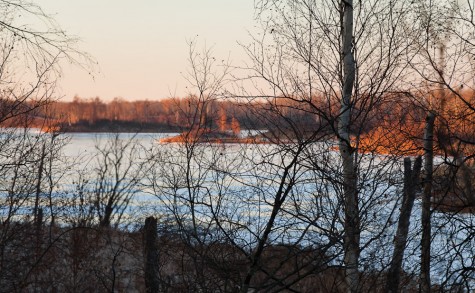 Cold early winter evening at Islet Lake Last week I took my camera (and my daughter) out to the Cooking Lake-Blackfoot Natural Area, about 30 min east of Edmonton, for an afternoon walk while the weather was still relatively mild. There has been just a dusting of snow so far this year, so the ice on the lake was bare and exposed to the quickly cooling air. As the sun moved lower in the sky and the temperature dropped the ice began to make terrific heaving, groaning and booming sounds. The frequency increased until there was nearly constant, resounding, echoing sound coming from the ice. Everything else was perfectly still, and the singing of the ice was the perfect background music while I took this quick photograph–just as the last sunlight made the bare aspen on the far shore glow a warm orange-red, in contrast to the cool blue of the shadowed lake ice in the foreground.
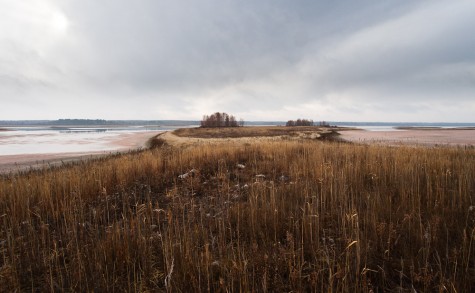 Receding Ministik shoreline This photograph is not brand new (it’s from earlier this winter), but I have been working with it recently, and would like to share it here. It had been a while since I’d had the time to hike in to this lake in the Ministik Game Bird Sanctuary, and it was a shock to see how far the water had receded since I’d last seen it. Not that I was terribly surprised–every lake at Ministik (and in most of Alberta) is showing the effect of the dry years we’ve had. What did surprise me was the colour of the mudflats–the pinkish-reddish hue in the photo is an accurate depiction (as much as is possible–but that’s another debate). The grey sky complemented the mudflats and dried grass, giving a very subtle, subdued pallette.
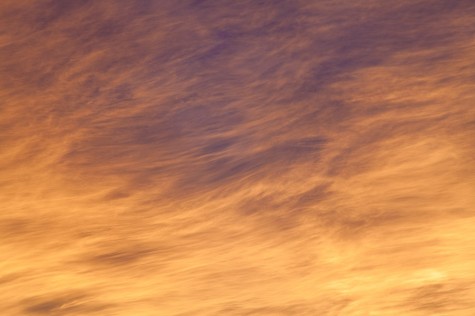 Fiery altostratus sunset This afternoon I went out for a walk at the Cooking Lake-Blackfoot Provincial Recreation Area. I spent several hours happily walking the Lost Lake/Islet Lake trails in unseasonably warm weather, but with a flat, grey layer of drab altostratus cloud overhead. That is to say, there weren’t many good photographic opportunities. As I was driving home, however, the sun snuck through a gap in the cloud just above the horizon–with stunning effect. I had to pull over to watch the–all too brief–colours spread across nearly the whole sky, and of course, take some photographs. I find this type of sky can be very hard to get a good exposure, where it’s not too dark but the highlights (especially the yellows) aren’t blown out or over-saturated, leaving detail-less areas within the wispy strands of cloud. I think this one turned out quite well, and I really like how the pattern of the cloud could be easily mistaken for fire, which is just what the sky looked like for a few minutes–aflame. I hope you enjoy it too.
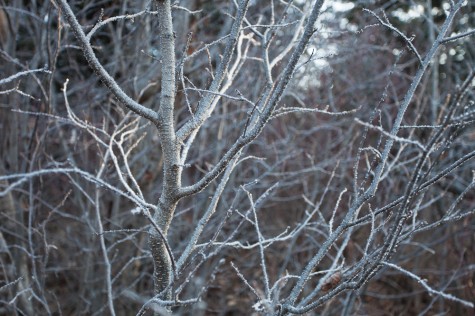 Light frost on aspen sapling Here’s another photo from my recent early morning walk at Whitemud Ravine. This photo is much more monochromatic than the one I posted yesterday, and perhaps captures the cold, frosty feel of the morning better. I made this photograph perhaps twenty minutes after the last photo, but this sapling was shaded in behind some large white spruce trees which are visible in the background. What do you think? Do you prefer this one or the previous, more colourful photo? I always appreciate the feedback, you can just click the “Leave a comment” link below–Thanks!
|
(Click photos to enlarge)
|








